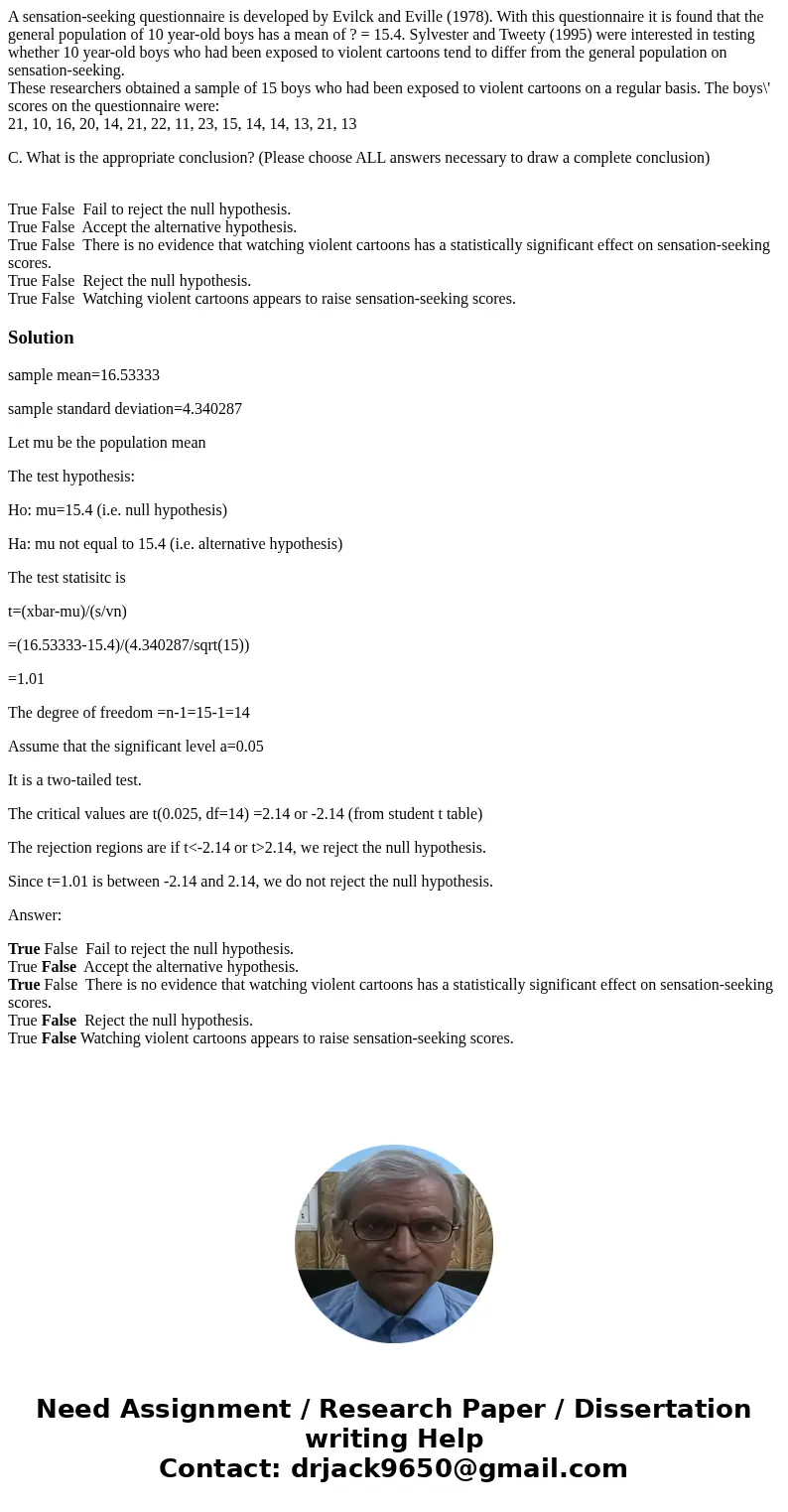A sensationseeking questionnaire is developed by Evilck and
A sensation-seeking questionnaire is developed by Evilck and Eville (1978). With this questionnaire it is found that the general population of 10 year-old boys has a mean of ? = 15.4. Sylvester and Tweety (1995) were interested in testing whether 10 year-old boys who had been exposed to violent cartoons tend to differ from the general population on sensation-seeking.
These researchers obtained a sample of 15 boys who had been exposed to violent cartoons on a regular basis. The boys\' scores on the questionnaire were:
21, 10, 16, 20, 14, 21, 22, 11, 23, 15, 14, 14, 13, 21, 13
C. What is the appropriate conclusion? (Please choose ALL answers necessary to draw a complete conclusion)
True False Fail to reject the null hypothesis.
True False Accept the alternative hypothesis.
True False There is no evidence that watching violent cartoons has a statistically significant effect on sensation-seeking scores.
True False Reject the null hypothesis.
True False Watching violent cartoons appears to raise sensation-seeking scores.
Solution
sample mean=16.53333
sample standard deviation=4.340287
Let mu be the population mean
The test hypothesis:
Ho: mu=15.4 (i.e. null hypothesis)
Ha: mu not equal to 15.4 (i.e. alternative hypothesis)
The test statisitc is
t=(xbar-mu)/(s/vn)
=(16.53333-15.4)/(4.340287/sqrt(15))
=1.01
The degree of freedom =n-1=15-1=14
Assume that the significant level a=0.05
It is a two-tailed test.
The critical values are t(0.025, df=14) =2.14 or -2.14 (from student t table)
The rejection regions are if t<-2.14 or t>2.14, we reject the null hypothesis.
Since t=1.01 is between -2.14 and 2.14, we do not reject the null hypothesis.
Answer:
True False Fail to reject the null hypothesis.
True False Accept the alternative hypothesis.
True False There is no evidence that watching violent cartoons has a statistically significant effect on sensation-seeking scores.
True False Reject the null hypothesis.
True False Watching violent cartoons appears to raise sensation-seeking scores.

 Homework Sourse
Homework Sourse